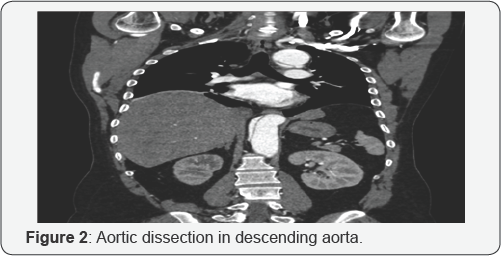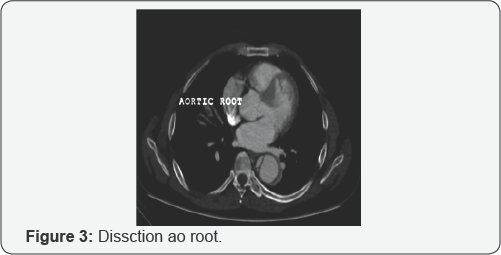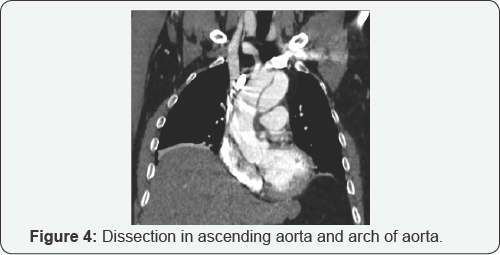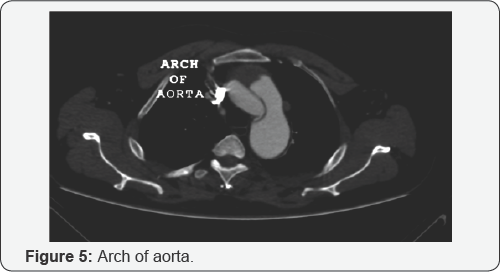Aortic Dissection_Juniper Publishers
ADVANCED RESEARCH IN GASTROENTEROLOGY & HEPATOLOGY JUNIPER PUBLISHERS
Authored by Jayesh V Trivedi
Introduction
Aortic dissection occurs in 3 in 100,000 people per year. Tear in the inner side of aorta causes blood to flow between layers of aorta causing separation of media layer into inner two third and outer one third. Dissection can be antegrade or retrograde.
Symptoms
96% of people will have chest pain with varying sevearity with or without radiation. Backpain, vomiting, sweating, headache, blood stained diARGHoea, paralytic ileus, strokes and death Males are more affected than females. Males will have double incidence as females.
Aetiology
Hypertension in 80% of patients was observed. Connective tissue disorders are also common. Bicuspid Aortic valve is seen in 7 to 14% of patients. 5 to 9% of patients have Marfan syndrome. Along with this atherosclerosis, trauma, post cardiac surgery, smoking, cocaineabusers, pregnancy, aortoarteritis, turners syndrome, high intensity weightlifting, syphilis are the other causes [1-4].
Diagnosis
D dimer more than 500ng/ml rules out Aortic dissection, Transoesophageal echocardiogramhelps in diagnosing the sensitivity is 98% and specificity is 97%. Ultrasound of abdomen, computerized Tomography, Magnetic resonant Angiography will diagnose Aortic dissection, the sensitivity is 98% and specificity is 98%.
This is being classified in to Stanford Type A. Where ascnding and arch of aorta are affected. Stanford Type B. where ascending aorta is spared. It is also classified in De Bakey classification as
Type 1: Dissection originates in ascending aorta.It occurs in patients less than 65 yrs of age.
Type 2: Dissection originates in ascending aorta and extends distally.
Type 3: Dissection occurs in descending aorta and rarely extends. This is commonly seen in patient having Hypertension and Atherosclerosis.
Management





Control Hypertension by either Betablockers, sodium nitroprusside, Calcium channel blocekers like Diltiazem or verapamil, nonpyridin calcium channel blockers. Target mean arterial blood pressure should be 60 to 75mm of hg. Initial decrease should be about 20%. Patient emotional care and reduction in psychological stress is equally important along with medical treatment. Surgical treatment either Endovascular or open surgery may be necessary in acute emergencies (Figure 1-5) [5-7].
Prevention
Tight Bp control, avoid smoking, maintain ideal weight, wear a suit belt, regular medical checkup and control of dyslipidemia is important. Severe hypotension in acute dissection indicates grave prognosis.
For more articles in Advanced Research in Gastroenterology & Hepatology please click on https://juniperpublishers.com/argh/index.php




Comments
Post a Comment